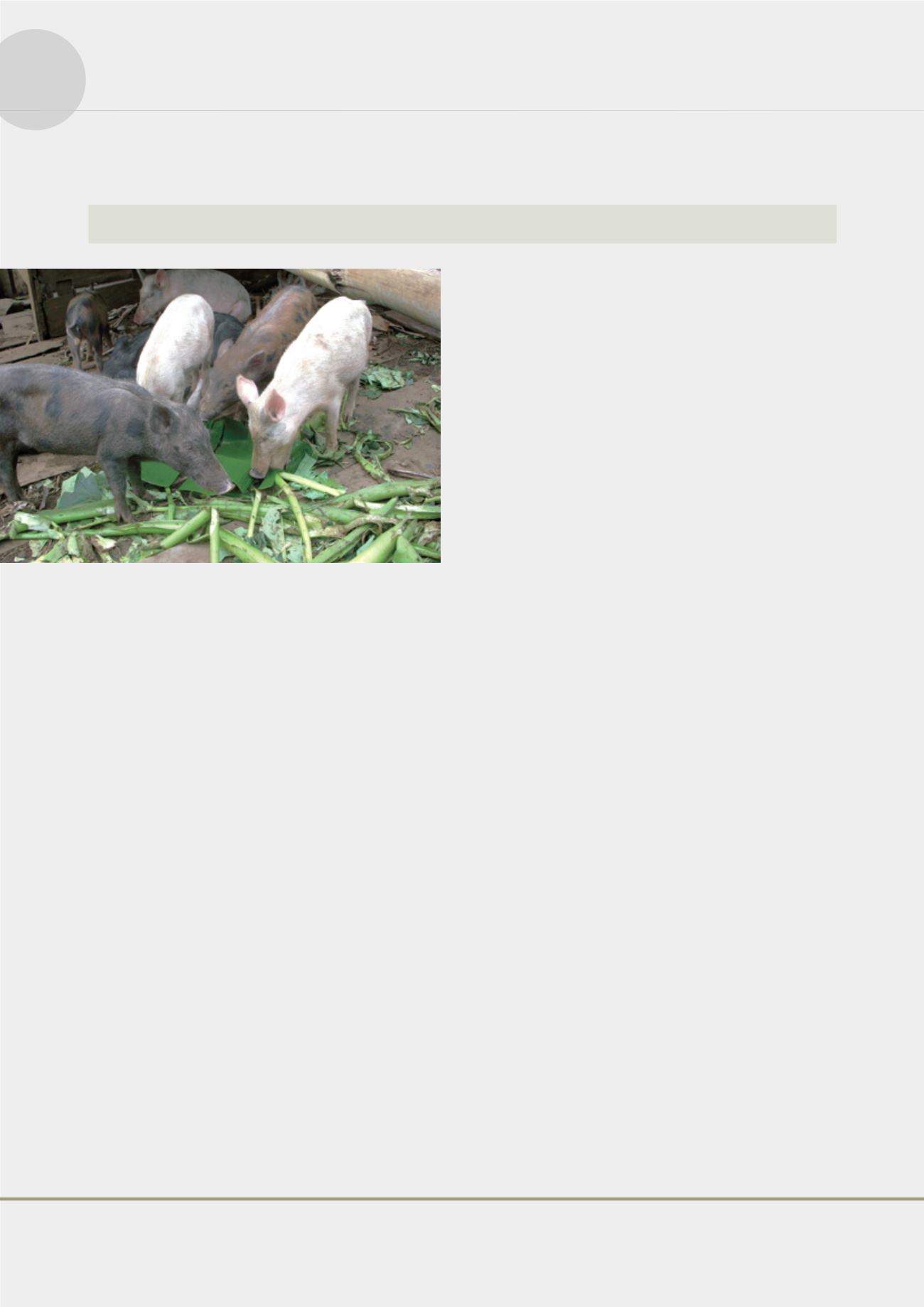
4
Special Reports - Agriculture
Case Study 4
Pig Development Project in São Tomé and Príncipe
its flagging pork industry. Thus, in 2012, we proposed
a six-year, US$5.2 million project designed to support
the development of the pork industry in São Tomé and
Príncipe.
Achieving Self-Sufficiency through Ownership
Using the principle of ownership, the project will
assist São Toméan authorities to conduct an overall
redesign of its swine industry and to improve local
specimens by importing new breeds and introducing an
improved breeding system. In the future, assistance will
also be provided to establish a national breeding and
promotion center to help maintain breeding lines and
supply high-quality piglets for distribution to farmers. The
project will help boost production by providing guidance
to farmers on fattening and raising their herds. Production
and marketing classes will also be organized for the
benefit of farmers’ organizations.
Furthermore, we plan to assist the government
to improve sanitary conditions and raise the value of
carcasses by renovating the only national slaughterhouse
in operation. We also plan to establish a unified production
and marketing system, improve the overall structure
of the industry and generate sustainable business
opportunities to achieve self-sufficiency in the local pork
industry. Overall, we expect the project to deliver 5,080
pigs to the local market over the course of six years.
Emphasizing Partner Countries, Building
Autonomy
In addition to the design of a complete industrial
chain, the other key theme underpinning project
implementation will be the idea that we should not only
“provide fish, but also teach others how to fish” — a
direction backed by the São Toméan government. In
2012, authorities there began to assemble a project
team and opened a dedicated project account. They will
continue to see the project through its course with the
guidance of Taiwanese professionals and gradually put
each of the project’s various components into place.
Our approach allows us to respect our partner countries
as they build the capacity to develop their industries in
a self-sufficient manner. This is our highest objective in
terms of the effectiveness of international aid projects.
In São Tomé and Príncipe, local farmers raise their pigs in captivity before
releasing them into the wild. Specimens are generally thin and of poor quality.
According to statistics published by the Food and
Agriculture Organization of the United Nations (FAO),
the total global output of pork was 102.60 million tons
in 2009, equivalent to around 15 kg of pork consumed
per person. Although pork is the second-most popular
meat in São Tomé and Príncipe after chicken, recent
statistics published by the São Toméan government
as part of plans to develop slaughterhouse operations
indicated that only 3,825 pigs had been processed in
2010, yielding 96,160 kg of meat. Among the country’s
160,000-strong population, this works out to an annual
average consumption of much less than 1 kg per person,
falling far short of the worldwide average. Furthermore,
the average weight of a pig slaughtered in São Tomé
and Príncipe is 25 kg, indicating that there is much room
for improvement in terms of the quality and quantity of
output.
The substandard pork industry in São Tomé and
Príncipe has led to low-quality pork at limited availability
and imbalances in production and marketing. The
lack of local production keeps prices high despite the
generally poor quality, which further dampens people’s
willingness to purchase and consume. The São Toméan
government is committed to resolving issues surrounding
its domestic supply of meat and protein and to reviving
42


